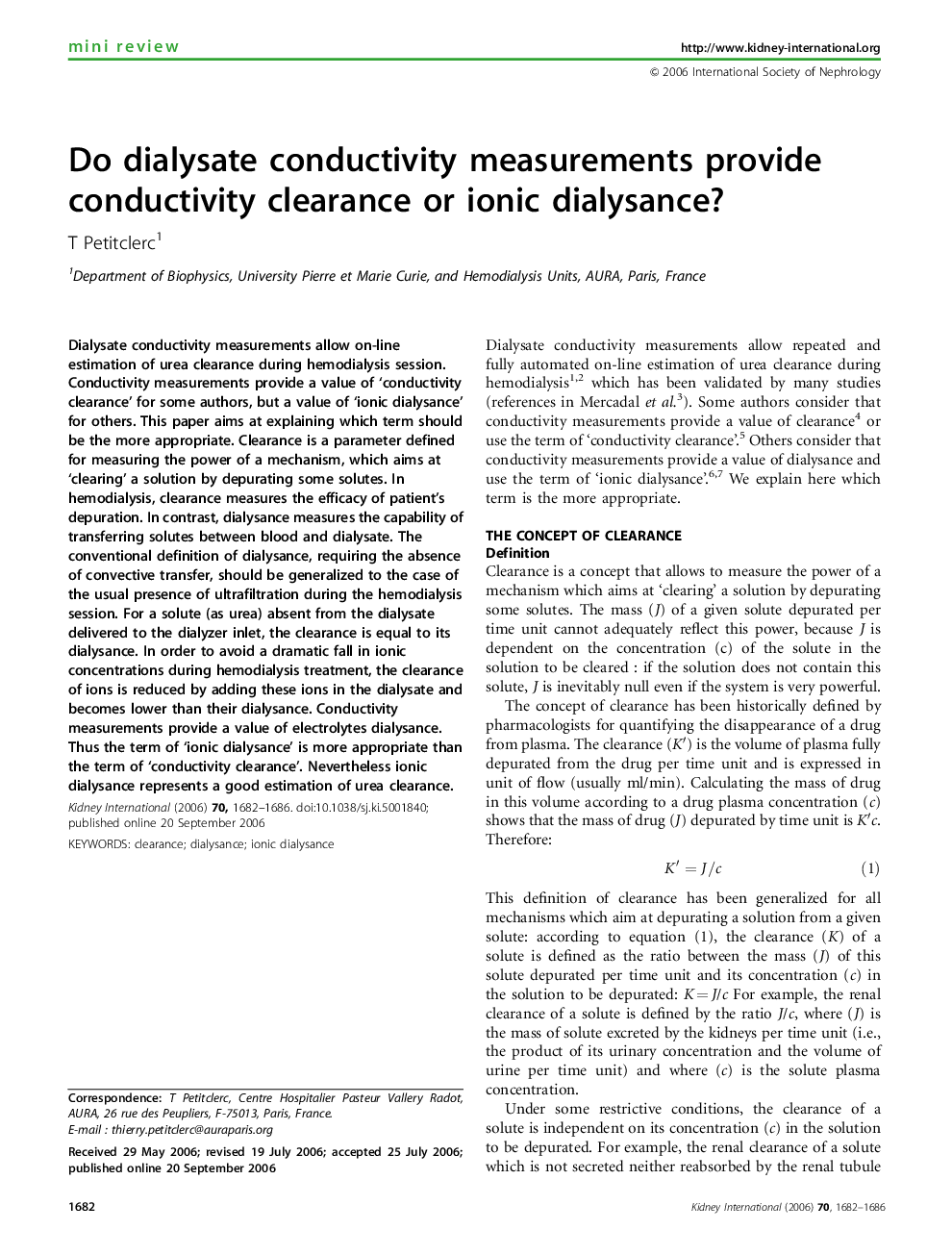| کد مقاله | کد نشریه | سال انتشار | مقاله انگلیسی | نسخه تمام متن |
|---|---|---|---|---|
| 3887661 | 1249594 | 2006 | 5 صفحه PDF | دانلود رایگان |

Dialysate conductivity measurements allow on-line estimation of urea clearance during hemodialysis session. Conductivity measurements provide a value of ‘conductivity clearance’ for some authors, but a value of ‘ionic dialysance’ for others. This paper aims at explaining which term should be the more appropriate. Clearance is a parameter defined for measuring the power of a mechanism, which aims at ‘clearing’ a solution by depurating some solutes. In hemodialysis, clearance measures the efficacy of patient's depuration. In contrast, dialysance measures the capability of transferring solutes between blood and dialysate. The conventional definition of dialysance, requiring the absence of convective transfer, should be generalized to the case of the usual presence of ultrafiltration during the hemodialysis session. For a solute (as urea) absent from the dialysate delivered to the dialyzer inlet, the clearance is equal to its dialysance. In order to avoid a dramatic fall in ionic concentrations during hemodialysis treatment, the clearance of ions is reduced by adding these ions in the dialysate and becomes lower than their dialysance. Conductivity measurements provide a value of electrolytes dialysance. Thus the term of ‘ionic dialysance’ is more appropriate than the term of ‘conductivity clearance’. Nevertheless ionic dialysance represents a good estimation of urea clearance.
Journal: Kidney International - Volume 70, Issue 10, 2 November 2006, Pages 1682–1686